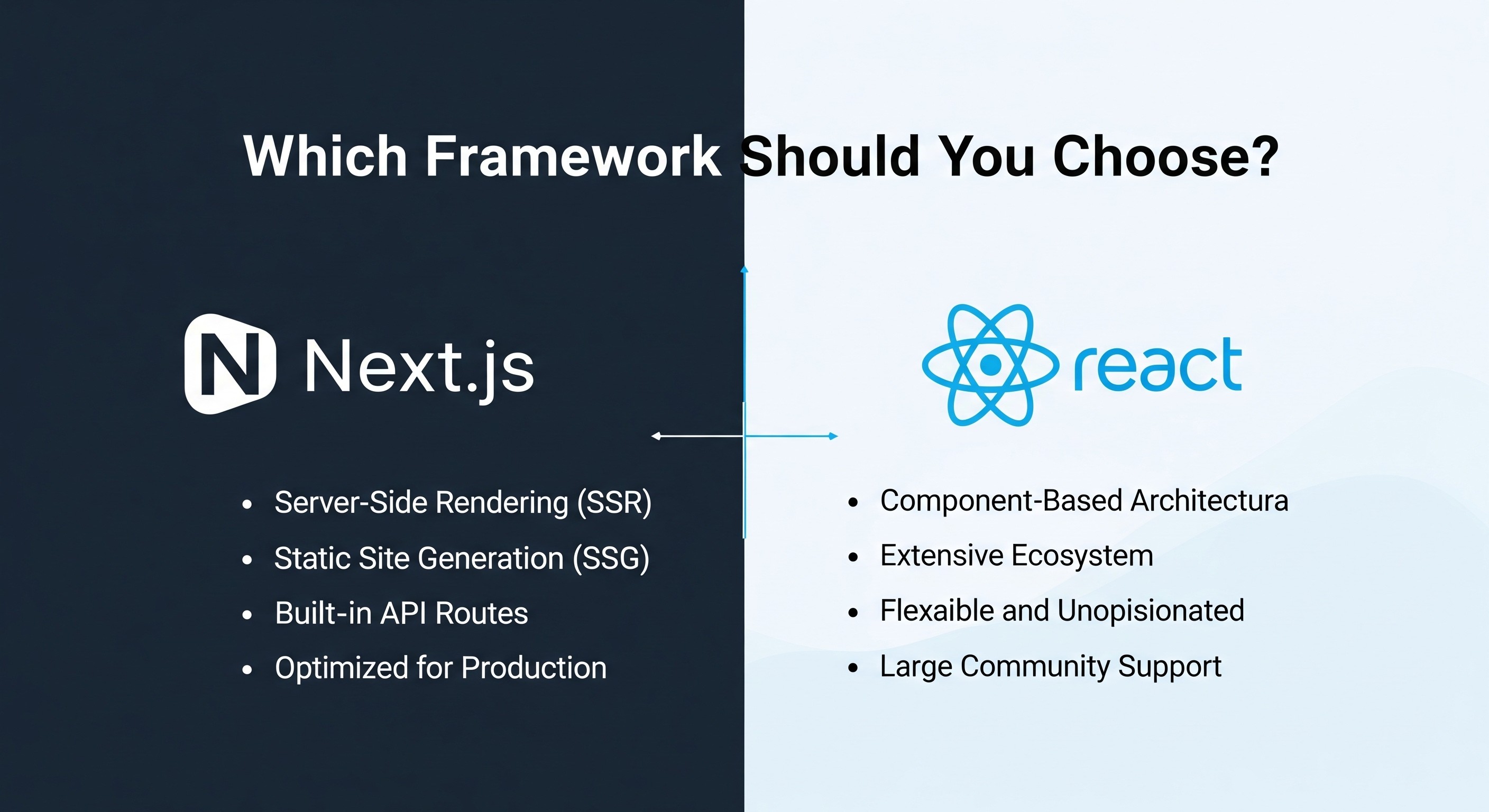React is a popular front-end library for building interactive UIs, while Next.js is a framework built on top of React that provides server-side rendering, routing, and performance optimizations. Choosing the right one depends on your project requirements.
React Overview
React is ideal for building dynamic single-page applications with reusable components. It gives developers complete flexibility but requires more setup for routing, SEO, and server-side rendering.
Next.js Overview
Next.js extends React with built-in routing, server-side rendering, static site generation, and API routes. This makes it easier to optimize performance, improve SEO, and deploy full-featured applications quickly.
Key Differences
- SEO & Performance: Next.js offers better out-of-the-box SEO and faster page loads.
- Routing: Next.js has file-based routing, React relies on libraries like React Router.
- Flexibility: React provides more freedom; Next.js enforces structure for simplicity.
When to Use
Use React if you need complete control or are building a highly interactive front-end app. Choose Next.js for SEO-focused sites, blogs, e-commerce, or projects that benefit from pre-rendering.
